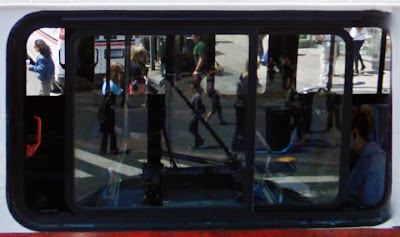Antony and the Johnsons performing on David Letterman.
This Thanksgiving Holiday I can’t think of a more appropriate song title than Antony and The Johnsons “Thank you for your love”. I’ve been vaguely aware of the band’s songs for a while as well as their indie critical reputation but seeing Antony Hegarty perform on Letterman a few weeks ago showed me what all the fuss was about.
The song is simply about the power of love to rescue you from pain. But in a time of as much global and national distress as we’re in now, this message shouldn’t ever be considered trite or sappy.
It’s a tradition in our family for each member to make a toast at Thanksgiving dinner saying what they have to give thanks for. But this year I would like to make a toast for the blog:
Thank you to the many readers who e-mail or come up to me out of the blue to say how much they enjoy The Year in Pictures. Thank you to the photographers whose work inspires all of us. (I know the pace of my postings has slowed down after nearly three years and over a million visits but I’ll continue to keep posting anything that seems noteworthy.) Thank you to my staff (past and present) whose professionalism and positive attitude make the gallery such a happy place. Thank you to our clients who appreciate all that the gallery stands for. Thank you to my friends - especially to the ones who love to talk about photography! Thank you to my running partners (about whom more later). And finally thank you to my children Julian and Josie and my wife Lucy for their love and for the way they put at least 110 percent into everything they do.
If there’s one miracle this Thanksgiving, it’s that this past July one of my running partners was biking in Central Park when a dog ran out in front of her causing her to flip onto her head, break her pelvis, and have a quarter of her skull removed in order to allow her brain not to compress. She was in hospital for nearly for a month and came out a little wobbly but exactly the same bright and cheerful person she was before the accident. Yesterday, along with our other running partner, we ran a full loop around the reservoir. And if that wasn’t enough another friend who had been in a coma for two weeks woke up on Monday!
Light is coming out of the darkness. Life is beginning to imitate Avatar. Happy Thanksgiving!
Below, special bonus official video.
Antony and the Johnsons official video












